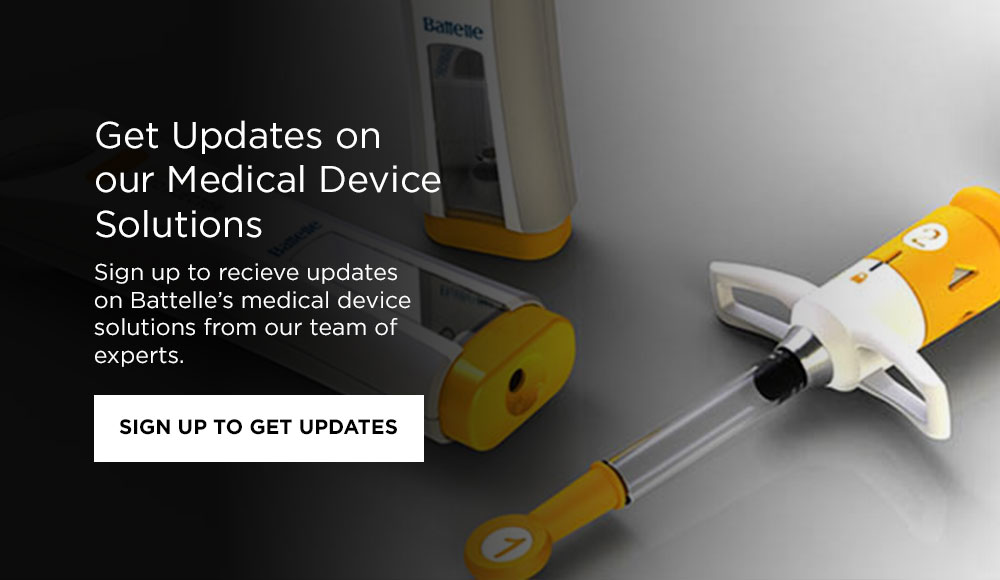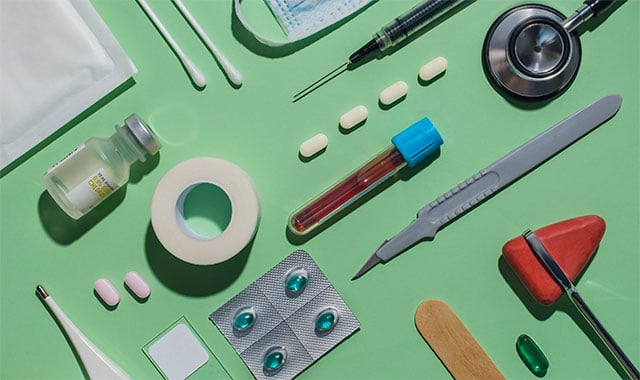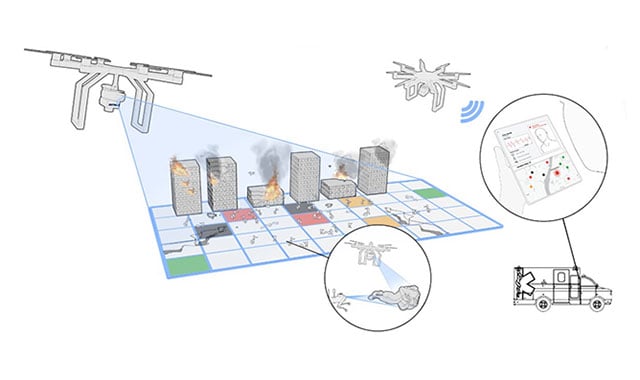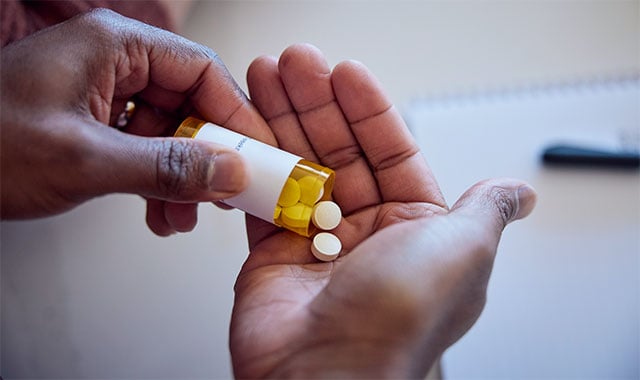Eco-Design Helps Medical Device Companies Meet Sustainability Targets

Sustainability is a growing concern for many medical device companies—but the path to meeting sustainability targets is often unclear. Developing more sustainable medical devices requires understanding the problem, setting the right goals, and finding the most cost-effective and impactful solutions.
For most companies, sustainability initiatives are driven by a mix of internal goals and values, consumer expectations, and current or anticipated regulatory pressures. But while there are numerous pathways to sustainability, they are not all equally practical, economical or impactful. Battelle’s Eco-Design initiative takes a holistic approach to medical device sustainability to help companies find the best path forward.
The Sustainability Challenge
When it comes to medical device sustainability, many people think primarily of waste. Waste is the most visible aspect of sustainability for end users; U.S. hospitals produce more than five million tons of waste per year, much of it in the form of single-use plastics in medical devices.
But medical device waste is only part of the problem. When setting sustainability goals, companies must look at the whole lifecycle of the medical device, including material selection, manufacturing processes, packaging and disposal. Without careful thought, many medical device sustainability initiatives amount to nothing more than “greenwashing”—that is, giving an appearance of eco-friendly design without addressing bigger issues such as energy and materials waste in manufacturing or inefficiencies in supply chains or distribution.
The first step is determining the overall objectives and priorities. Reducing waste? Reducing the overall carbon footprint of a device? Preparing for upcoming and anticipated U.S. and global regulations? Addressing consumer concerns? Each of these objectives may require a different strategy for making sustainability decisions.
At the same time, device developers must ensure that any changes made to improve sustainability do not introduce problems with device safety or performance or put undue burdens on users (such as complex sanitation or disposal requirements). And the altered device must still meet all regulatory requirements.
Making effective decisions for Eco-Design requires extensive cross-disciplinary expertise—expertise that medical device companies don’t necessarily have on staff in the numbers required to meet growing demand. And many design firms servicing the medical device industry don’t have all the right expertise in-house, either. Some firms may offer stand-alone environmental impact assessments, but without a comprehensive look at alternatives, this information may not be enough to connect the dots to a viable solution. Others specialize in just one aspect of the problem, such as material selection or packaging design. This can lead to a fragmented approach that makes it hard to make effective decisions.
That’s where Battelle’s Eco-Design Services come in. We bring everything together under one roof for a more holistic and effective approach to sustainable design.

The Battelle Approach to Eco-Design
Battelle brings together a multidisciplinary team that can include materials science, engineering, human factors, and other specialties to not only envision a comprehensive solution but also develop the tools and methods required to support that solution. Our holistic approach applies human-centric design and systems engineering methodologies to consideration of the entire product lifecycle during each phase of development. The goal? To find the solution that delivers the biggest impact for the least cost, effort and disruption.
Our Eco-Design methodology includes several key strategies.
- Start with the end in mind. Instead of simply looking at an existing device and making marginal sustainability improvements, sometimes it helps to step back and look at the end goal. For example, if the goal is to get a drug into a patient, is there a more sustainable way to achieve this? Thinking outside the box can lead to significant sustainability improvements.
- Look at the big picture. The needs of patients, caregivers and purchasers must remain at the forefront when designing a new device or making changes to an existing device. And, of course, the device must be safe and effective. Sustainability decisions need to be made with these larger goals in mind. Ideally, the solution will save costs and improve the user experience at the same time as improving sustainability.
- Start early. For the biggest impact and the least cost, incorporate sustainability goals early in the development process, during project planning, early research and concept generation. The earlier in the process you start, the easier it will be to implement sustainable device design.
- Set concrete and sustainable targets. Goal setting is a collaborative process involving stakeholders from across the organization. Sustainability targets should be concrete, attainable and understandable. They must also be aligned with other organizational priorities and with relevant regulatory guidance. Having a clear template for analysis and decision-making will help to get everyone on the same page. When we work with our clients, we provide easy-to-understand reports documenting comparative assessments and alignment with project goals.
- Think across the entire lifecycle. A comprehensive environmental impact assessment looks at the full product lifecycle, from material selection and manufacturing, to packaging and distribution, to final disposal. We use a combination of established databases and proprietary tools to evaluate the impact and assess different options for improvement at each stage.
- Evaluate the impacts and tradeoffs. For each potential change, what are the projected impacts (positive and negative)? In addition to looking at the environmental footprint of the proposed design, developers must also consider manufacturing costs, supply chain implications, and user experience while maintaining or improving safety and efficacy. When making changes to an existing approved device, it is also important to understand formal testing and regulatory compliance activities associated with the proposed change. Every design decision has both advantages and tradeoffs to consider.
- Iterate, iterate, iterate. Eco-Design is an iterative process between the Battelle team and stakeholders for our client company. We work together to develop an actionable plan that meets sustainability targets while minimizing unintended negative consequences. That includes iterative testing, assessment and refinement to optimize solutions for competing requirements.
Battelle’s approach is made possible by our broad and diverse science and technology expertise, which includes the ability to reach back across the Institute for highly specialized skill sets. We combine that expertise with a defined system and tools for Eco-Design that make the process highly effective, repeatable and understandable.
Ultimately, sustainability is about more than simply making a device with x% less plastic or y% fewer emissions. It’s about looking at device design in a new way, starting with the end goals in mind. Working in partnership with our clients, we are creating a new generation of devices that meet the needs of medical product companies, patients and the environment.
The Conference on Innovations in Climate Resilience, presented by Battelle in collaboration with DOE National Laboratories, offers a curated technical program with invited keynote presentations, platform and lightning talks and a poster reception. Click here to register today.

Related Blogs
BATTELLE UPDATES
Receive updates from Battelle for an all-access pass to the incredible work of Battelle researchers.







